How to Grow and Care for Cauliflower: Proven Techniques for Spectacular Results
- May 10, 2024
- 0 comment
Discover how to grow and care for cauliflower with proven techniques for spectacular garden results. Start your thriving cauliflower journey today. Diving into the art of growing and caring for cauliflower can transform your green space into a bountiful garden. This article explores proven techniques that guarantee spectacular results, ensuring that your cauliflower not only grows but thrives.
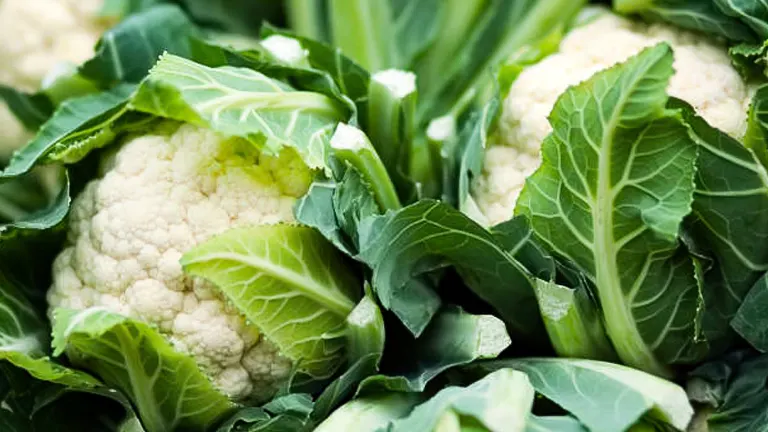
From selecting the right soil to mastering the timing of planting and harvesting, we’ll cover everything you need to know to achieve a healthy and productive crop. Unlock the full potential of your garden with these expert tips and start your journey to a thriving cauliflower harvest today.
Table of Contents
- What is Cauliflower?
- Choosing the Right Variety
- Site Selection and Preparation
- Watering and Nutrition
- Managing Pests and Diseases
- Pruning and Maintenance
- Harvesting and Storage
- Common Mistakes to Avoid
- Conclusion
- FAQs
What is Cauliflower?
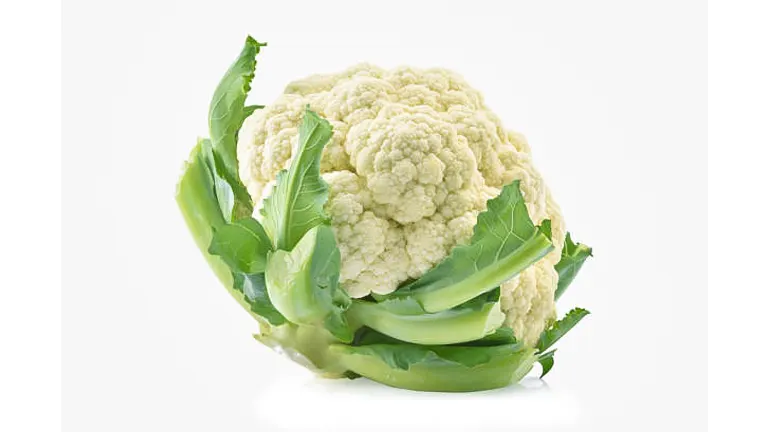
Cauliflower (Brassica oleracea botrytis) is a member of the Brassicaceae family, which also includes broccoli, kale, cabbage, and Brussels sprouts. It is known for its distinctive edible heads, or curds, which are clusters of undeveloped flower buds. Native to the Mediterranean region, cauliflower was domesticated and selectively bred for its characteristic heads during the Roman era.
This cool-season vegetable thrives in steady temperatures between 60°F and 70°F (15°C to 21°C). Fluctuating or extreme temperatures can cause developmental issues, including buttoning (formation of small heads). Cauliflower requires nutrient-rich, well-drained soil with a pH of 6.5-7.5.
Cauliflower has garnered popularity not only for its culinary versatility but also for its numerous health benefits. It is low in calories but high in fiber, vitamins, and phytonutrients. Additionally, cauliflower contains glucosinolates, compounds believed to have anticancer properties, and isothiocyanates, which exhibit anti-inflammatory effects.
| Attribute | Details |
|---|---|
| Scientific Name | Brassica oleracea botrytis |
| Family | Brassicaceae (Mustard Family) |
| Edible Part | Immature flower buds (curds) |
| Optimal Temperature | 60°F to 70°F (15°C to 21°C) |
| Nutritional Value | High in vitamins C and K, folate, and fiber |
| Calories (per 100g) | 25 kcal |
| Health Benefits | Anti-inflammatory, anticancer properties, digestive health |
| Common Issues | Buttoning, boron deficiency, clubroot |
| Unique Varieties | Romanesco (spiral-patterned), Graffiti (purple), Cheddar (orange) |
Fun Fact: The striking fractal-like pattern of Romanesco cauliflower is a natural example of a Fibonacci sequence in plants.
Choosing the Right Variety
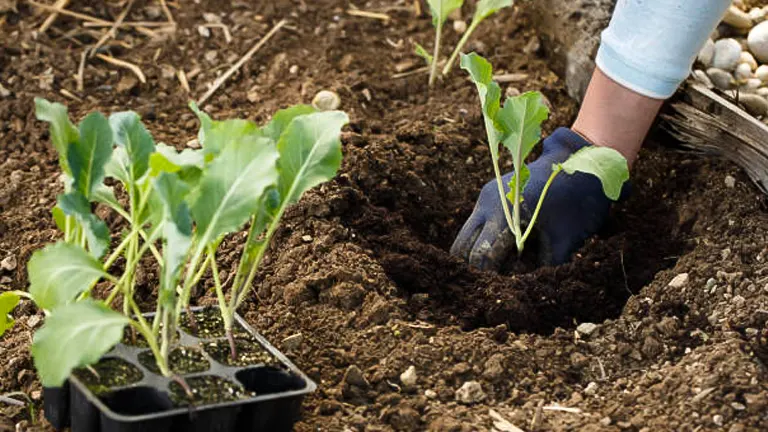
Selecting the right cauliflower variety is crucial to a successful crop, as different types are optimized for various climates and growing conditions. Cauliflower is typically categorized based on color, head shape, and maturity rate. Each type offers a unique combination of flavor, appearance, and growth characteristics, making it essential to choose varieties that align with your regional climate and culinary preferences.
For Cooler Climates
- ‘Snowball’: A compact, early-maturing variety with dense, pure-white heads. Hardy in colder temperatures, it’s often favored for spring and fall planting.
- ‘Autumn White’: An heirloom type that withstands frost well and thrives in cooler weather, making it ideal for late-season planting.
For Warmer Climates
- ‘Cheddar’: A vibrant orange variety rich in beta-carotene. It’s heat-tolerant and produces mild, nutty-flavored curds.
- ‘Green Macerata’: Known for its striking light-green color and mild flavor. Offers good heat tolerance while maintaining productivity in warm regions.
Specialty Varieties
- ‘Graffiti’: A visually stunning purple cauliflower rich in anthocyanins. Suitable for a wide range of climates and maintains its vibrant color after cooking.
- ‘Romanesco’: Famous for its unique fractal head structure, it boasts a nutty flavor and is best grown in moderate climates.
Variety Selection Table
| Variety Name | Maturity (Days) | Color | Optimal Climate | Unique Traits |
|---|---|---|---|---|
| Snowball | 50-60 | White | Cool | Early-maturing, compact |
| Autumn White | 65-75 | White | Cool | Frost-tolerant, hardy |
| Cheddar | 65-75 | Orange | Warm | High beta-carotene, nutty |
| Green Macerata | 75-85 | Light Green | Warm | Mild flavor, heat-tolerant |
| Graffiti | 75-85 | Purple | Moderate | Rich in anthocyanins |
| Romanesco | 80-100 | Green | Moderate | Fractal head structure |
With so many options, choosing the right cauliflower variety should involve considering your local climate, planting schedule, and desired flavors and aesthetics. Matching these factors with the right type ensures that your cauliflower crop will thrive in your garden and enrich your culinary experiences.
Site Selection and Preparation
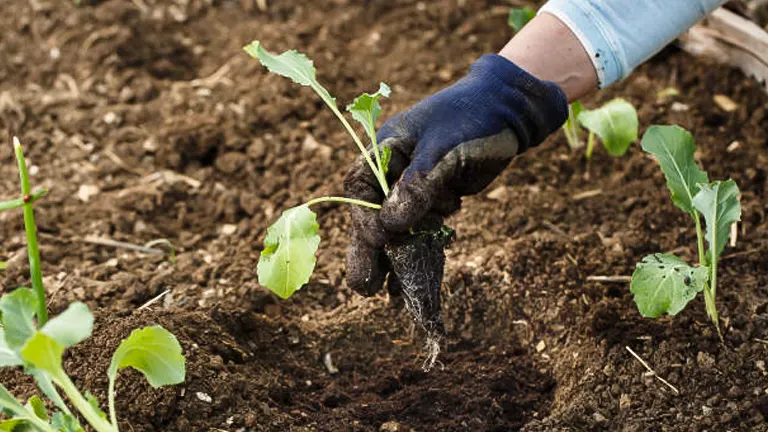
Choosing an ideal site is crucial for cauliflower cultivation. The plant thrives in areas with full sun and well-drained, fertile soil with a pH between 6.5 and 7.5. Prior to planting, enrich your soil with compost or well-rotted manure to boost nutrient content. This step is vital for cauliflower, as it requires nutrient-rich soil to develop its distinctive heads.
Ensure the site is clear of weeds and has good air circulation. This reduces the risk of disease and pest infestation, setting the stage for a healthy growing season.
Planting Techniques
Timing is key when planting cauliflower. In temperate climates, sowing in early spring or late summer can help avoid the peak summer heat, which can hamper development. In frost-free areas, cauliflower can be planted in the autumn for a winter harvest.
Planting Details:
- Spacing: For medium-density orchards, space plants about 18 inches apart with 30 inches between rows. This spacing allows for optimal air circulation and sunlight penetration, which are essential for robust growth.
- Depth: Sow seeds at a depth of about half an inch. For seedlings, ensure the root ball is fully covered by soil, but the stem base sits just at the soil line to prevent rotting.
Careful attention to these planting details sets the foundation for a productive cauliflower crop, paving the way for the subsequent care and maintenance steps that will further ensure your gardening success.
Watering and Nutrition
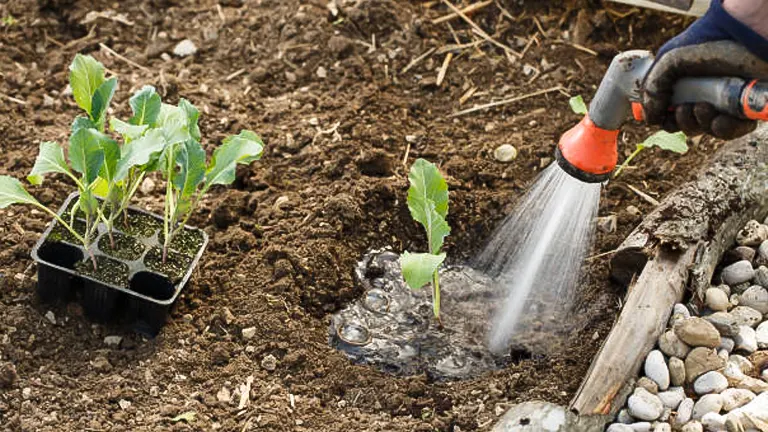
Proper hydration and nutrition are pivotal for cultivating healthy cauliflower. This vegetable demands consistent moisture levels to form its dense, edible heads, yet it is highly susceptible to root diseases caused by excessive water. Understanding the balance is key.
Watering Guidelines:
- Soil Moistness: Cauliflower requires soil that remains evenly moist. Use a soil moisture meter or check the soil manually to maintain the optimal moisture level without overwatering.
- Watering Depth and Frequency: Deep, infrequent watering encourages robust root development. Aim for soil penetration of about 6-8 inches each time. Adjust the frequency to ensure about 1-2 inches of water per week, but increase during dry spells and decrease during rainy periods.
- Mulching: Apply a 2-3 inch layer of organic mulch, such as straw or shredded leaves, around the plants. This helps maintain soil moisture, reduces temperature fluctuations, and suppresses weed growth.
Nutritional Needs: Cauliflower’s demand for nutrients is high throughout its growth cycle. The plant’s ability to develop healthy heads is directly influenced by the availability and balance of key nutrients.
- Initial Fertilization: Start with a balanced 10-10-10 (NPK) fertilizer at planting to provide a solid foundation of nitrogen, phosphorus, and potassium.
- Side-Dressing: As the plants grow, particularly when the heads begin to form, additional nitrogen can be crucial. Apply a high-nitrogen organic fertilizer, such as blood meal or a well-balanced synthetic slow-release formula.
- Organic Options: For continuous nutrient supply, use fish emulsion, seaweed extract, or compost tea every 2-4 weeks. These organic options not only feed the plant but also enrich the soil with microorganisms that aid plant health.
Nutrient Table
| Nutrient | Function | Optimal Amounts |
|---|---|---|
| Nitrogen (N) | Promotes leaf and vegetative growth. | High during initial and mid-growth phases |
| Phosphorus (P) | Supports root development and energy transfer | Moderate throughout the growth cycle |
| Potassium (K) | Enhances overall health and stress resistance | High throughout the growth cycle |
| Calcium (Ca) | Crucial for preventing blossom end rot | Consistent supply needed |
| Magnesium (Mg) | Vital for chlorophyll production and enzyme processes | Moderate, particularly during early growth |
Additional Considerations:
- pH Levels: Cauliflower prefers slightly acidic to neutral soil (pH 6.5-7.5). Regular soil testing can help maintain the correct pH level, ensuring nutrient availability and absorption.
- Water Quality: Use chlorine-free water if possible, as chlorine can harm beneficial soil microbes essential for nutrient uptake.
Managing Pests and Diseases
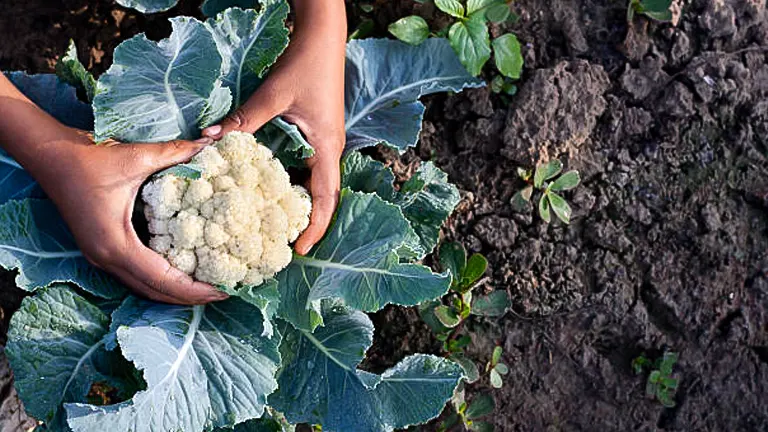
Cauliflower is susceptible to a variety of pests and diseases, which can hinder growth and reduce crop quality. Common pests include aphids, flea beetles, and cabbage loopers. To manage these effectively:
- Physical Barriers: Use floating row covers to protect plants from pests while allowing light and water to penetrate.
- Natural Predators: Encourage beneficial insects, such as ladybugs and lacewings, which prey on aphids and other pests.
- Organic Pesticides: Neem oil and insecticidal soaps can be effective for controlling infestations without harming the environment.
Diseases like clubroot and black rot can also pose significant threats. To prevent these:
- Crop Rotation: Avoid planting cauliflower in the same area as other brassicas for at least four years.
- Sanitation: Keep the garden area free of debris and fallen leaves to reduce disease spread.
- Resistant Varieties: Opt for disease-resistant cauliflower varieties when available.
Regular monitoring and early intervention are key to managing these challenges. By keeping a close eye on your plants and addressing issues promptly, you can maintain a healthy growing environment that supports robust cauliflower development.
Pruning and Maintenance
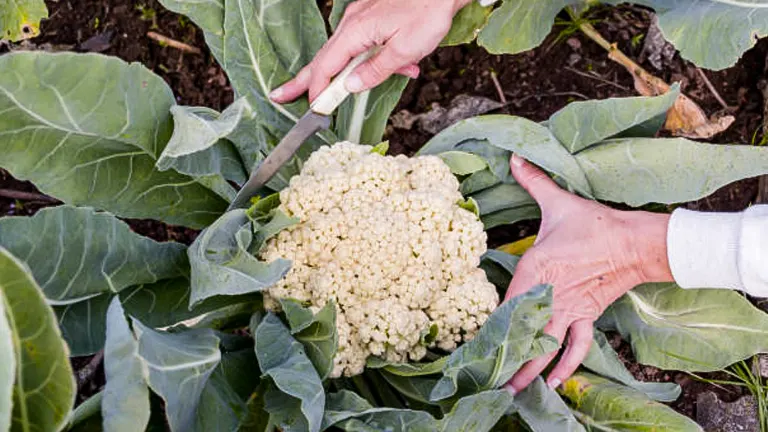
Pruning and maintenance are crucial for optimizing cauliflower growth and ensuring the energy is focused on developing robust, market-quality heads rather than excessive foliage. Here’s a refined approach:
Leaf Pruning: Cauliflower plants can become quite leafy, which may overshadow the developing heads. Properly pruning these leaves can significantly impact the plant’s health and productivity.
- Technique: Identify outer leaves that block sunlight from reaching the central head. Using clean, sharp shears, cut these leaves back to improve light penetration and air circulation. This selective trimming helps prevent the buildup of moisture and reduces the risk of fungal infections.
- Frequency: Perform this task as needed throughout the growing season to maintain optimal plant health and sun exposure.
Blanching: For varieties that are prized for their white curds, blanching is essential to prevent the heads from turning green and becoming bitter due to sunlight exposure.
- Method: When the head is about 2-3 inches in diameter, gather the large outer leaves and loosely tie them over the curd using soft twine or elastic bands. This shields the head from direct sunlight.
- Duration: Keep the leaves tied for about 5-7 days until the head matures to a creamy white.
Weed and Mulch Management: Keeping the area around your cauliflower plants free of weeds is vital for reducing competition for nutrients and water. Mulching plays a dual role in moisture conservation and weed suppression.
- Mulching: Apply a 2-3 inch layer of organic mulch, such as straw, bark, or leaf mold, around the base of each plant. This helps maintain soil moisture and keeps root temperatures stable, fostering a favorable growing environment.
- Weed Control: Regularly remove weeds by hand or with a hoe, being careful not to disturb the cauliflower roots, which can extend outward from the plant.
Maintenance Table
| Activity | Purpose | Technique | Frequency |
|---|---|---|---|
| Leaf Pruning | Improve light exposure and air circulation | Trim overshadowing leaves with sharp shears | As needed |
| Blanching | Maintain white color of curds | Tie outer leaves over the head | Once per season |
| Mulching | Retain soil moisture and suppress weed growth | Apply organic mulch around plant base | Once per season |
| Weed Control | Reduce nutrient and water competition | Remove weeds manually or with tools | Regularly |
By implementing these advanced pruning and maintenance strategies, gardeners can ensure their cauliflower plants are healthy, productive, and visually appealing. The focus on specific techniques and their timing helps gardeners manage their crop more effectively, leading to better yields and quality.
Harvesting and Storage
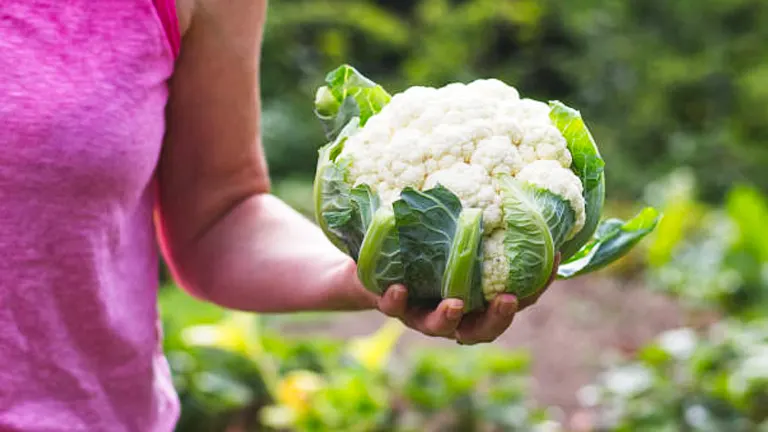
Harvesting cauliflower at the right time is crucial for quality and taste. Look for these signs to determine when it’s ready:
- Head Size: Harvest the cauliflower head when it is compact, firm, and white, typically 6-8 inches in diameter. If the head begins to spread out or the florets start to separate, it’s past its prime time for harvesting.
- Leaf Condition: The surrounding leaves should still be vibrant and green. If they start to yellow, it may indicate that harvest time is overdue.
Use a sharp knife to cut the head off the plant, leaving some of the leaf wrapper attached to protect it. If you’re not using the cauliflower immediately, it can be stored in the refrigerator for about a week. For longer storage, blanching and freezing cauliflower is an effective method to preserve its quality and nutritional value.
Common Mistakes to Avoid

Growing cauliflower can be rewarding, yet challenging for beginners and experienced gardeners alike. Here are several common mistakes to watch out for:
- Inadequate Spacing: Crowding plants can lead to poor air circulation and smaller heads. Ensure you maintain the recommended distances between plants and rows, especially in medium to high-density setups.
- Irregular Watering: Cauliflower needs consistent moisture. Irregular watering can stress the plants, leading to poor development. Implement a regular watering schedule and adjust based on weather conditions.
- Neglecting Soil Health: Failing to enrich the soil with necessary nutrients can stifle cauliflower growth. Regularly amend the soil with organic compost or a suitable fertilizer to maintain a nutrient-rich environment.
- Ignoring Pests Early On: Early detection and management of pests are crucial. Regularly inspect your plants and act quickly if you notice signs of pest activity to prevent widespread damage.
By avoiding these errors and adhering to the guidelines provided, gardeners can significantly improve their chances of cultivating healthy and productive cauliflower plants.
Related Post
- How to Fertilize Bougainvillea: A Complete Guide for Stunning Blooms
- How to Fertilize Apple Trees: Essential Tips for a Bountiful Harvest
- How to Fertilize Lemon Trees: Secrets for Thriving Citrus
- How to Fertilize Avocado Tree: A Step-by-Step Guide for Lush Growth
Conclusion
Growing cauliflower successfully requires attention to detail—from selecting the right variety and preparing the soil to proper planting, maintenance, and harvesting. By following the proven techniques outlined in this article, you can ensure spectacular results in your garden. Whether you’re a novice or a seasoned gardener, the key to success lies in understanding the needs of your plants and responding appropriately. With patience and care, your efforts will yield a flourishing cauliflower crop, ready to be enjoyed for its taste and nutritional benefits.
FAQs
- What specific soil amendments improve cauliflower growth most effectively?
Incorporating calcium-rich amendments like gypsum can prevent common problems such as tip burn in cauliflower by stabilizing soil calcium levels. Adding organic matter such as leaf mold or well-aged compost also improves soil structure and nutrient availability. - Can cauliflower benefit from companion planting, and if so, what are the best companions?
Yes, cauliflower benefits from companion planting. Plants like celery, beets, spinach, and herbs like dill and rosemary can help deter pests and may even enhance flavor. Avoid planting near tomatoes or strawberries, which can inhibit growth. - How does the timing of cauliflower planting affect head formation?
The timing is crucial as it needs to match the cauliflower’s growth phase with ideal weather conditions. Planting too late or too early in the season can expose the plant to harsh temperatures that may hinder head formation. - Is it possible to grow cauliflower in a hydroponic system?
Yes, cauliflower can be grown hydroponically, though it’s more challenging than other vegetables. It requires a stable, well-oxygenated water system and nutrient solution rich in nitrogen and potassium to support its growth phases. - How do I manage soil pH specifically for growing cauliflower?
Cauliflower thrives in slightly acidic to neutral soil (pH 6.5-7.5). To raise soil pH, lime can be added, and to lower it, elemental sulfur may be used. Regular soil testing can help maintain the optimal pH range for cauliflower. - What are the signs that cauliflower is not getting enough sunlight?
Signs include leggy plants, small leaves, and delayed head formation. Cauliflower needs at least 6 hours of direct sunlight per day. If plants show these symptoms, consider reducing shading or relocating them to a sunnier spot. - How can I reuse the soil of a cauliflower bed for the next planting?
Rotate crops by planting a non-brassica species that has different nutrient needs, such as legumes, which can help replenish nitrogen in the soil. Also, rejuvenate the soil by adding fresh compost and organic matter before replanting. - Are there any non-chemical ways to correct yellowing leaves in cauliflower plants?
Yellowing leaves may be a sign of nutrient deficiency. Applying a foliar feed of Epsom salt (magnesium sulfate) can help if the yellowing is due to magnesium deficiency. Ensure the plant is not over-watered and that the soil is well-draining to prevent root rot.
With these proven techniques at your fingertips, you’re well on your way to cultivating spectacular cauliflower in your garden. Remember, patience and attention to detail are your best tools in achieving a bountiful harvest. Happy gardening!

Emma Hudson
Forestry AuthorEmma's experience in farming shapes her detailed guides on gardening and farming tools, providing practical, actionable advice grounded in real-world experience. Her work targets both newcomers and experienced farmers, aiming to enhance their practices with a mix of traditional wisdom and modern techniques. By making complex agricultural concepts accessible, Emma's guides serve as valuable tools for those navigating the challenges of contemporary farming, offering strategies for sustainable success.





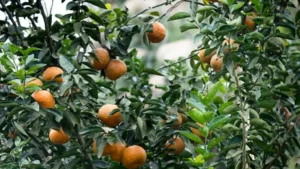




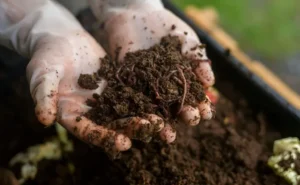


Leave your comment